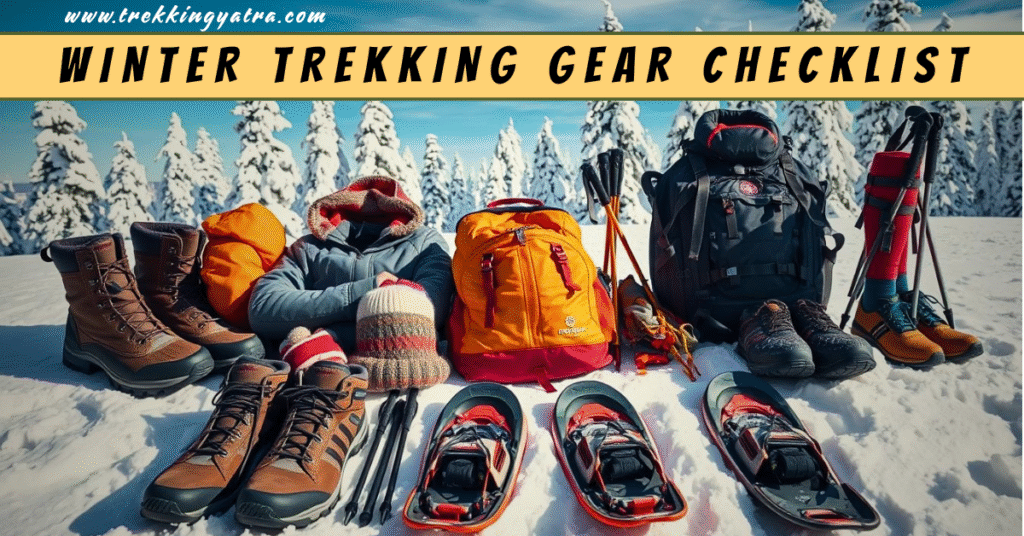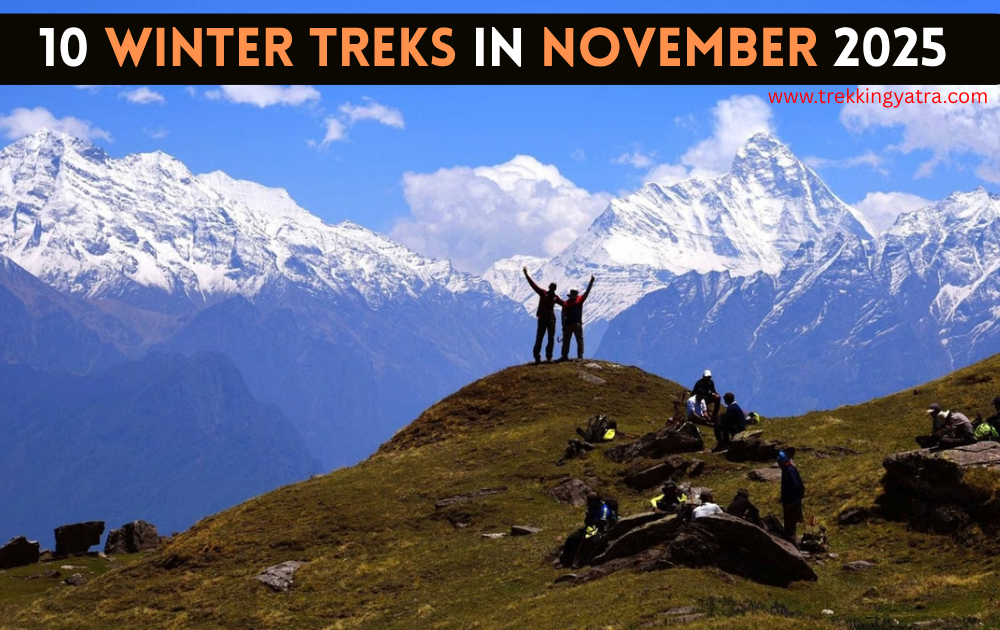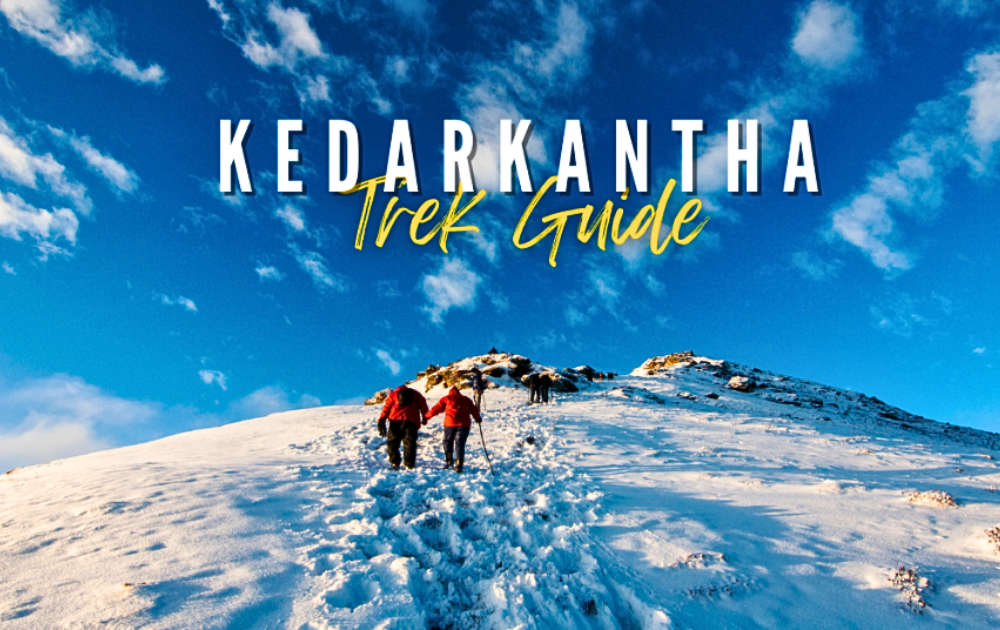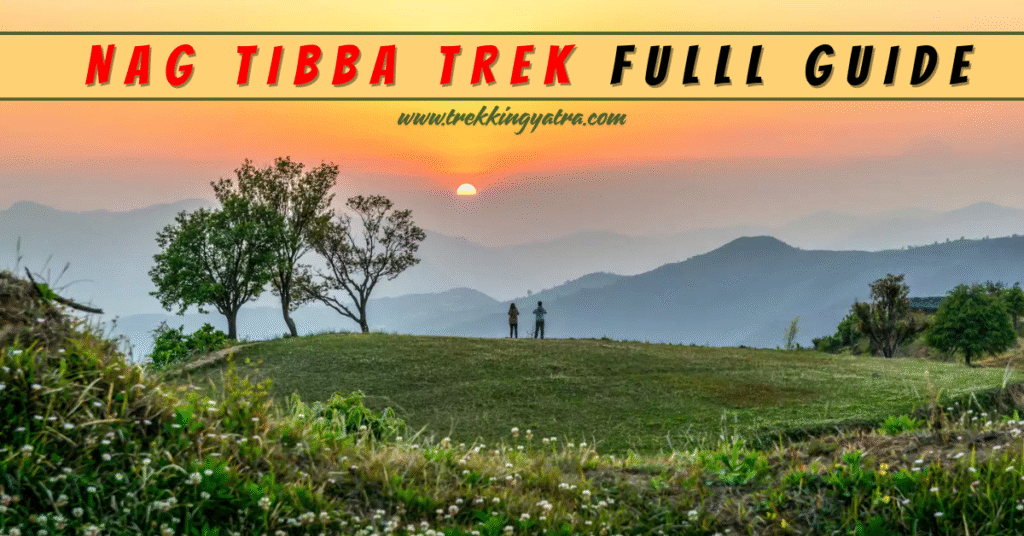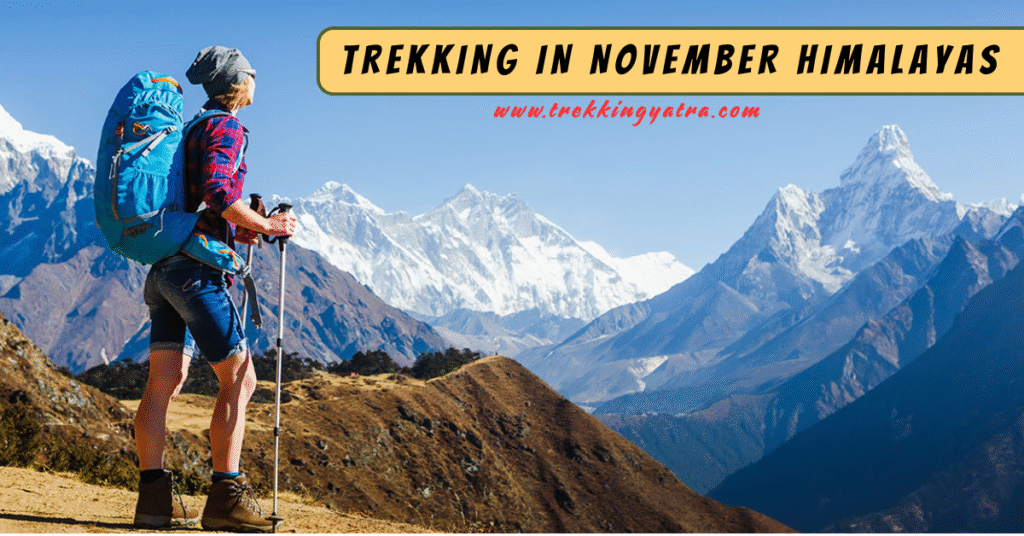Winter Trekking Gear Checklist 2025
Winter trekking in the Himalayas is magical — clear skies, snow-dusted meadows, and crisp sunrise views. But winter also brings cold, wind, icy trails, and rapidly changing weather. The right gear keeps you warm, reduces injury risk, and makes every summit push enjoyable instead of miserable. This winter trekking gear checklist 2025 is tuned for treks you’ll attempt in November → March (Kedarkantha, Brahmatal, Chopta/Tungnath, Dayara Bugya, and similar routes). Use it as your packing bible: buy what you need, rent what’s expensive, and always test new gear before the trek.
How to read this checklist
I break gear into categories (clothing, footwear, sleep & camp, safety & navigation, kit & smalls). For each item, I explain why it matters, what to look for, and — when useful — a product recommendation with Amazon.in link so you can check specs and reviews. For layering guidance and high-altitude winter basics, I follow Indiahikes’ proven layering system (carry multiple warm layers; change into insulating layers immediately after a day’s hike).
1) Base layers — the invisible warmth
Why: Base layers wick sweat away from your skin so you don’t freeze. Cotton is a no-go; it holds moisture and chills you.
What to carry:
- Top & bottom thermal base layers (lightweight for daytime, heavier top for nights). Merino wool or synthetic (polypropylene/ polyester) both work — merino smells less, synthetics dry faster.
- Why two sets? One set for daytime, one for sleep/backup.
Suggested product types:
- Merino tops or polyester thermal sets — choose a snug fit and flat seams.
2) Mid and insulating layers — trap the heat
Why: These are your main warmth providers when you stop or at camp.
What to carry:
- Fleece mid-layer (full zip or pullover) — breathable, easy to vent while hiking.
- Lightweight insulated jacket (down or synthetic) — compressible for summit breaks and evenings.
- Heavy down jacket for nights at basecamp if temperatures dip below 5°C.
Product suggestion (mid/insulation example):
- Quechua Forclaz 100 / Forclaz softshell or equivalent — solid, affordable mid-layer option for colder treks. Example listing on Amazon.in: Quechua Forclaz men’s warm jacket. Amazon India
3) Outer shell — wind + waterproofing
Why: A good shell blocks wind, sheds light snow, and protects from wet-snow melt. Waterproofness + breathability are musts.
What to look for:
- Waterproof, windproof shell jacket (GORE-TEX / similar) with taped seams and helmet-compatible hood.
- Waterproof trekking pants with side zips for ventilation.
Tip: If buying one item only for winter, get a reliable shell — it’s the “insurance policy” against hypothermia.
4) Footwear — traction, ankle support, insulation
Why: Boots are the backbone of any winter trek — wrong footwear causes blisters, cold feet, and injuries.
What to carry:
- Waterproof, ankle-support trekking boots with an aggressive outsole and room for a wool sock + liner. A Gore-Tex or waterproof membrane helps with wet snow and stream crossings.
- Lightweight microspikes or crampons — necessary if your route has icy sections.
- Gaiters — prevent snow from entering boots.
- Warm socks (wool) + thin liners.
Recommended boot (real option on Amazon.in):
- Salomon X Ultra 4 GTX — Waterproof hiking shoe/boot. Popular, well-reviewed option for Himalayan winter treks that need grip and Gore-Tex protection. Check specs & fit on Amazon. in: https://amzn.to/4hguxWt. Amazon India
Recommended traction device:
- Kahtoola MICROspikes — high-quality traction for icy trails (lightweight microspikes that fit over boots). If your November trek has early ice/snow patches, these are strongly recommended. Amazon.in link: https://amzn.to/48IF0Ih. Amazon India
Recommended trekking poles:
- Black Diamond Trail Pro Shock trekking poles — durable, adjustable, shock-absorbing poles that help on icy descents and steep climbs. Example: https://amzn.to/3J7hme0. Amazon India
5) Backpack — capacity, fit, rain cover
Why: A backpack that fits well saves your back and helps organize layers, food, and an emergency kit.
What to carry:
- 50–65 L backpack for 4–7 day winter treks (layers, sleeping bag, food, fuel).
- Ensure hipbelt load transfer, a ventilated back panel, and a separate top lid or front access.
Recommended pack:
- Osprey Atmos AG 50 (or Atmos AG 50L) — industry-leading suspension & comfort for loaded winter treks. If budget is a concern, Wildcraft/Quechua also offers decent alternatives. Amazon listing: https://amzn.to/42Q6Ka5. Amazon India
Tip: Always test fit with a weight of ~8–12 kg before leaving.
6) Sleep system — sleeping bag & pad
Why: A warm sleeping system prevents overnight heat loss and fatigue — arguably as important as your jacket.
What to carry:
- Sleeping bag rated for the expected night temperature (comfort rating better than the expected low). For many November treks, expect temps near -5°C to -10°C on high camps — a 0°C to -10°C bag is common for early winter.
- Sleeping pad with R-value — insulated foam/air pads to stop ground heat loss (an R-value of 3+ or equivalent is good for mild winter; higher for colder nights).
Recommended sleeping bag:
- Naturehike Ultralight Down/650FP sleeping bags — various models and temp ratings available on Amazon.in (choose the model with the correct temperature rating for your trek). Example listing: https://amzn.to/3WRDBrn. Amazon India
7) Headlamp & small electrics
Why: Early starts, late camps, and emergency signaling — you must have a reliable light.
What to carry:
- Rechargeable headlamp with >200–300 lumens and red light mode.
- Power bank (20,000 mAh recommended) kept inside your insulated jacket to prevent battery drain in cold.
Recommended headlamp:
- Petzl ACTIK CORE — rechargeable, bright, and reliable headlamp used widely by trekkers. Amazon.in listing: https://amzn.to/4niZf2P. Amazon India
8) Water bottles & insulation
Why: Cold weather hides dehydration — insulated bottles or flasks stop your water from freezing and keep fluids warm.
What to carry:
- An insulated stainless steel bottle/flask (750–1000 ml) and a light collapsible bottle for the day.
- Keep bottles inside the sleeping bag or jacket at night if temperatures are below freezing.
Recommended bottle:
- Hydro Flask 1 L / 24 oz (or similar vacuum-insulated bottles) on Amazon.in: https://amzn.to/4oqS6OP. Amazon India
9) Gloves, hats, balaclava & neck gaiter
Why: Extremities lose heat fastest — good head/hands protection prevents rapid heat loss and frostbite risk.
What to carry:
- Light glove liner + insulated ski glove (waterproof).
- Balaclava / woolen cap and neck gaiter.
- Spare thin liners for sleeping.
Tip: Bring waterproof outer gloves for summit days and warmer mittens for camp.
10) First-aid, emergency & navigation
Why: Remote trails require a compact but well-thought-out first aid and emergency kit.
What to carry:
- Small first-aid kit (blister plasters, painkillers, antibiotic cream, bandage, tape).
- Oximeter & thermometer (optional but useful above 3,000 m).
- Emergency bivvy/survival blanket and a whistle.
- Paper map + compass / offline maps on phone (downloaded).
11) Cooking & food (if camping)
Why: High calories + warm fluids = morale and warmth at camp.
What to carry:
- Lightweight stove + fuel canister (test before leaving).
- High-calorie, easy meals (instant soups, porridge, dry fruits, nuts, energy bars).
- Insulated mug — hot tea at camp is priceless.
12) Packing strategy & day-pack contents
How to pack:
- Keep heavier items close to your back (sleeping bag in the lower compression sack).
- Top lid/daypack: essentials for the summit day — extra jacket, water, snacks, headlamp, gloves, sunglasses, sunscreen, microspikes if needed.
Day-pack checklist:
- Water + thermos, snacks, sun protection, small first-aid, map/phone, headlamp, glove liners, emergency foil blanket.
13) Practical tips & gear money-savers
- Rent the expensive, low-use items (sleeping bag, down jacket, microspikes) from rental services — Indiahikes and local rental shops are reliable. rentals.indiahikes.com
- Test everything before the trek — wear boots on long walks, test the sleeping bag at home or on a cold night.
- Label and zip small items into dry bags — cold fingers struggle with fiddly zips.
- Use ziplock bags for electronics — condensation is common when entering warm tents from cold.
- Spare batteries in an inner pocket — batteries die faster in cold.
Quick product summary with Amazon links (items I recommended above)
- Salomon X Ultra 4 GTX (Trekking boots) — https://amzn.to/4nRGOTQ. Amazon India
- Kahtoola MICROspikes (Traction) — https://amzn.to/4qeFrAp. Amazon India
- Black Diamond Trail Pro Shock (Poles) — https://amzn.to/46Z29ot. Amazon India
- Osprey Atmos AG 50 (Backpack) — https://amzn.to/499N6to. Amazon India
- Naturehike Down/Ultralight Sleeping Bag — https://amzn.to/47h05XG. Amazon India
- Petzl ACTIK CORE Headlamp — https://amzn.to/47bUdin. Amazon India
- Hydro Flask Insulated Bottle (1L) — https://amzn.to/4oxHNbT. Amazon India
- Quechua Forclaz warm jacket (mid layer) — example:https://amzn.to/3L5F2Qt. Amazon India
Final checklist (printable)
Carry this on your phone or print it:
Clothing:
- Thermal top & bottom (x2 sets)
- Fleece mid-layer
- Lightweight insulated jacket (down/synthetic)
- Heavy down jacket for nights
- Waterproof shell jacket & pants
- Trekking pants + quick dry shirts
- 3 pairs of wool socks + liners
- Gloves (liner + insulated waterproof)
- Balaclava, cap, neck gaiter
Footwear & accessories:
- Waterproof trekking boots (broken-in)
- Gaiters
- Microspikes/crampons (if icy)
- Trekking poles
Sleep & camp:
- Sleeping bag (0°C to -10°C based on trek)
- Sleeping pad (insulated)
- Tent (if independent) + stove/fuel (if cooking)
Safety & smalls:
- Headlamp + spare batteries
- First aid + blister kit
- Oximeter (optional)
- Map, compass, phone with offline maps
- Power bank (insulated)
- Water bottle + thermos
- Suncream, sunglasses
Closing notes — buy vs rent, and test gear
Winter treks reward careful preparation. If you only plan a single winter trek a year, renting expensive items (sleeping bag, crampons, insulated jacket) is a smart choice — quality gear is pricey. Still, rentals exist (Indiahikes/Crosstrek and local rental shops). If you buy, prioritize boots, a durable shell, and a tested sleeping bag. And — critically — test every new item on at least one cold night walk or a backyard overnight so nothing surprises you at 3,000+ meters.
